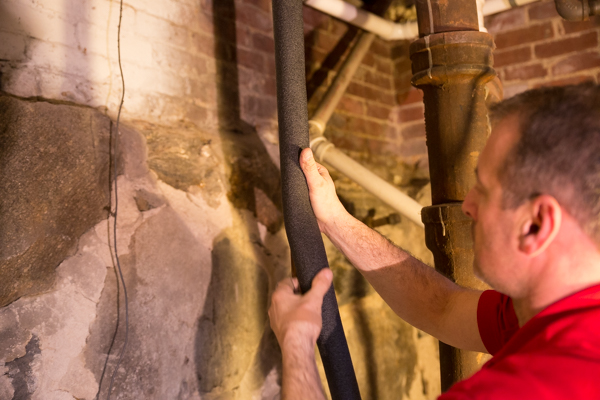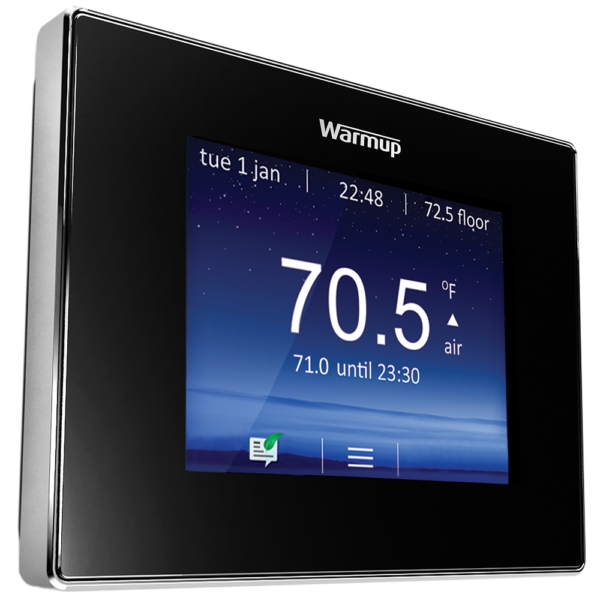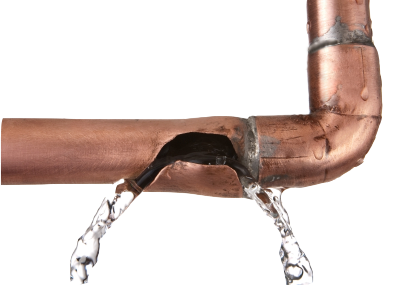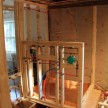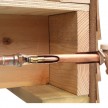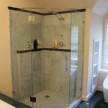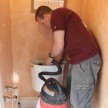Preventing Pipes From Freezing
How-To Avoid Freezing Pipes
This winter is predicted to be a COLD one, and that means frozen water pipes….. brrrrrrr! Before it gets cold take a moment to evaluate your water pipes and take the precautions now and save from costly repairs later. Preventing pipes from freezing should be done at the time of construction, not after the pipes freeze.
Build Well
A well thought-out building design, ensures that pipe are installed on interior walls, and inside condition spaces. With older homes, remodeling often adds water and heating lines. Sometimes these pipes are placed in vulnerable areas, because of access issues. This article was designed to give you options with preventing pipes from freezing.
How Pipes Burst
When a pipe freezes, it will not usually burst at the frozen part, but somewhere between the freeze and the faucet. Ice blockage in a water pipe creates extreme pressures inside the pipe. Remember the pipe is completely filled with water, the ice creates expansion pressure inside the pipe which causes the water pressure to increase downstream, which can be thousands of pounds of additional pressure, and this can lead to a burst in the pipe. Upstream from the freeze the water pressure does not build up because it can retreat back towards its source.
A good pipe burst can cause gallons of water to run behind walls and ceilings causing thousands of dollars of damage to your house and personal items.

Photo: Centurypublicadjusters.com
Costly Damage
Water has a unique property in that it expands as it freezes. This expansion puts tremendous pressure on whatever is containing it, including metal or plastic pipes. No matter the “strength” of a container, expanding water can cause pipes to break.
Pipes that a most susceptible to freezing are:
- Water and heating pipes running along outside walls
- Pipes that run near basement walls or windows that have little or no insulation
- Outdoor hose bibs
- Swimming pool supply lines
- Water sprinkler lines
- Water supply pipes in unheated interior areas like basements and crawl spaces, attics, garages, or kitchen cabinets
- Pipes in an unheated house or structure
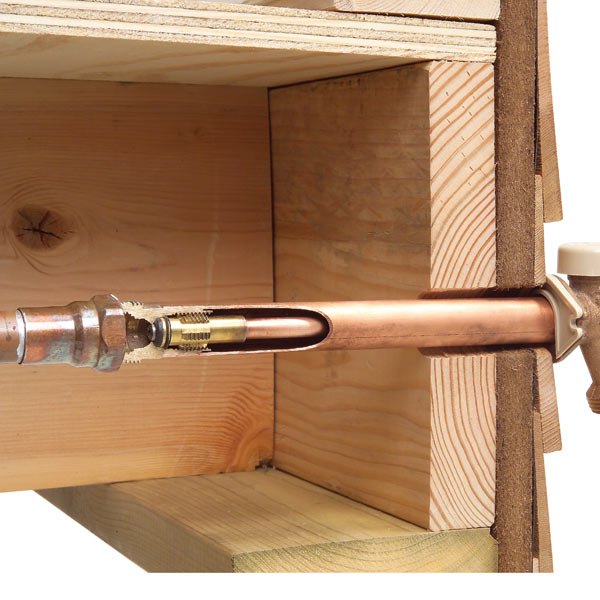 Install Anti-Freeze Exterior Faucets:
Install Anti-Freeze Exterior Faucets:
These outdoor faucets have a long stem that extends through the house wall and controls a valve inside the house, away from the cold exterior wall. Water doesn’t stand in the portion of the pipe or faucet outside the wall where it could freeze. These faucets don’t need a shut off valve, but installing one is always a safer choice, and easily done when installing a new faucet.
Tip: Turn off these shut offs in extreme cold spells, and insulate the rim joist, which is the exterior wall / floor framing located directly above the foundation wall. [The rim joist is the board that the pipe, pictured above, is running through]

Seal All Air Drafts And Leaks In The Basement:
A small pinhole air leak can cause frigid air to freeze an unprotected water pipe. Seal all penetration holes made from the installation of cable wires, phone wires, pipes, window leaks, framing leaks, etc. I suggest using expanding foam to seal the gap between your foundation walls and house siding as well as around all penetrations. Doing this and insulating your rim joist [mentioned below] are two inexpensive steps, with a large “pipe freeze prevention” returns.

Source: Proconstructionguide.com
Insulate The Exterior “Rim Joists” In Your Basement:
No matter where you install it, insulation is a wise investment and can certainly make a difference in preventing pipes from freezing. The rim joist is the outer most section of your basement and is often not insulated. Insulating here helps prevent frozen pipes as well as the overall energy efficiency of your home. While your doing this ensure that all basement windows close tightly, latch tight and the glass is intact. Repair or replace any window that doesn’t.
Insulate your pipes:
Adding pipe insulation to your pipes may be as routine as A-B-C, but most homeowners don’t understand how it works. Pipes do not burst because ice blockages radially expand and crack the sidewall. Rather, as the blockage grows, it pressures the water downstream. To prevent frozen pipes, wrap lines in heat tape, [see below] and quality pipe insulation. Focus on hot water pipes and u-bend connections. Pay special attention to the pipes closest to the exterior walls, crawl spaces or unheated areas. Read: 7 Tips for Winterizing you Home
Keep your heat to a minimum of 55 degrees:
By using the presets properly I can ensure that the heat will NEVER dip below a predetermined preset. The biggest take away here is to NEVER lover your heat below 55 degrees, or shut off your heat in the winter. Programmable thermostats help you reduce heating or cooling consumption.
I like the programmable function because it allows me to program in automatic “resets” to the temperature, for example:
- 5:45 AM Temperature set for 68 degrees
- 8:30 AM Temperature set for 62 degrees
- 6:30 PM Temperature set for 68 degrees
- 1130 PM Temperature set for 62 degrees
- 5:45 AM back to 68 degrees again . . .
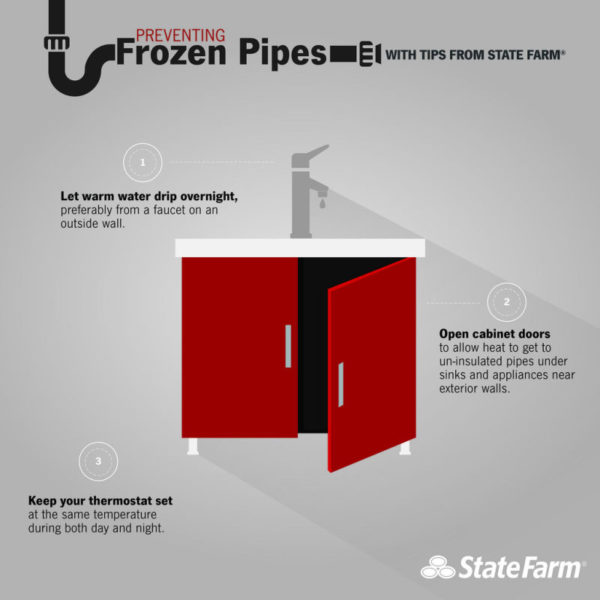
Source: StateFarm
Leave kitchen and bathroom sink cabinet doors [on exterior walls] open:
During freezing temperatures, for sinks against outside walls, leave the cabinet doors open. This allows warmer room air to circulate around pipes. Doing this, in conjunction with, setting the faucet to drip, will prevent freezing.
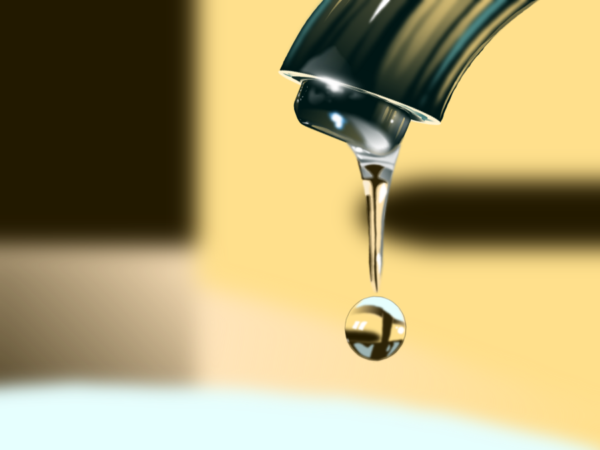
Photo: everetthitch.deviantart.com
Dripping Faucet:
This one is “Old School.” I remember as a kid when we experienced extreme cold snaps my mother would open the kitchen sink cabinet doors to expose heat to the pipes and she would also leave our faucets dripping to prevent the pipes from freezing.
I always thought that leaving the water dripping prevented the pipes from freezing? That’s not exactly correct. It’s not the small flow of water that prevents freezing; it helps, but water can freeze even with a small flow. A dripping faucet relieves pressure build up in the water pipes to prevent them from bursting as a result of ice buildup. The dripping faucet flow can help slow, or prevent freezing. If the dripping stops, continue to leave the faucet open, to relieve pressure when the pipe thaws.
Consider rerouting and insulating vulnerable water pipes:
Pipes next to basement windows, in non-insulated walls, or along basement rim joists can be relocated. Relocating these pipes further into the house, or installed in a warm interior wall will better protect them from freezing. This is best done when constructing the house or remodeling but can also be done afterward as a preventative measure.
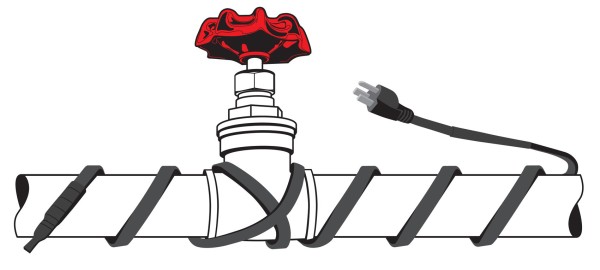
Install heat tapes on vulnerable pipes:
Heat cables are specifically designed to use on plastic or metal pipes susceptible to freezing. they should only be installed on pipes that are in the open, and in accessible areas. Pipes located inside unheated buildings, mobile homes, non-conditioned residential basements, attics, or out-buildings subject to freezing temperatures, are candidates for heat tape. Heat tapes is not designed to be buried inside wall, ceiling, or floor cavities. Heat tapes, used in conjunction with pipe insulation, is an inexpensive solution for frozen pipes.
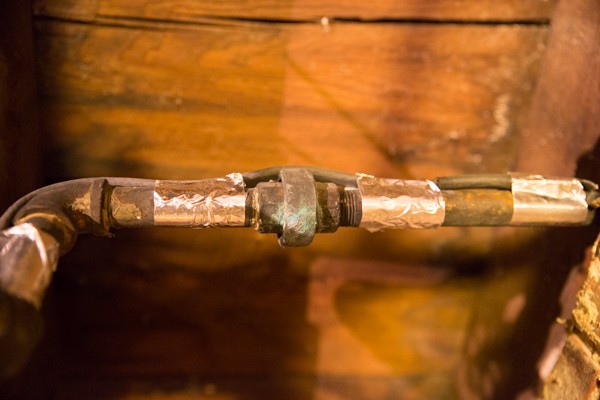
Some vulnerable pipes are:
- Water Lines
- Pipes in unheated areas, crawl spaces
- Plumbing lines
- Discharge Pipes
- Exposed P-traps
- Sprinkler lines
- Tanks, Valves
An insulated pipe can withstand cold temperatures longer than an non-insulated pipe. Self-regulating freeze protection cables, are designed to work, in conjunction with pipe insulation. This includes insulating all valves, tees, and spigots. Read my article on Installing Pipe Freeze Protection Heating Cable
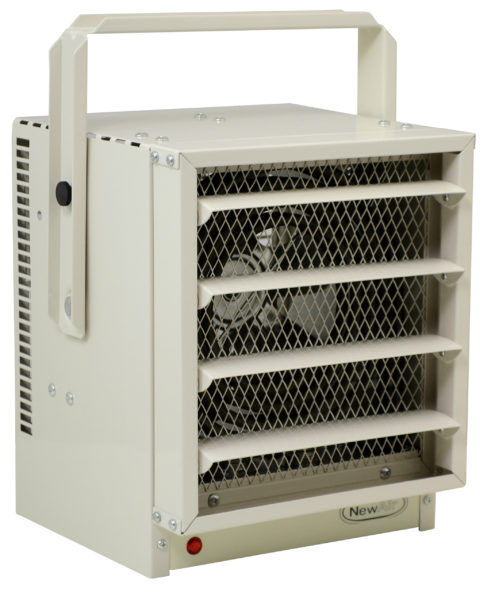
Add Heat To Problem Areas:
Adding heat to unheated areas at risk of freezing can solve a lot of freeze issues. Many times bathroom water lines, located above an unheated garage space, will freeze. Adding heat to the garage space, insulating and weather stripping the doors can resolve this issue.
Crawl spaces are difficult places to work and even more difficult to seal off properly. They are difficult areas for water and heat lines to live in. The best way to deal with cold air in a crawl space is to encapsulate it, and add heating and summer cooling to the space. Read more about crawl spaces in my article on Venting and Insulating a Crawlspace.
.

Photo: Alivecampus,com
Leaving For Vacation:
If your going away on vacation dont lower your heat too low and have someone check the house while your gone. Leave the heat on to 55 degrees, shut of the water main and consider draining the system by opening all the faucets [hot and cold] in the house.
Winterizing A Home: Water Systems
Closing a summer vacation home for the winter, or leaving your own home during winter for an extended period, means taking a series of steps to protect your investment.
Here’s some tips:
- Shut off water systems by turning off the pump or closing the valve if on city water. Drain the pressure tank.
- Leave all faucets open.
- Open a union close to the valve, so water will drain out all the way back to the shut-off valve.
- Drain pump and run a second or two, be sure all water is out of lines from the pump.
- Flush toilets and dip all water out of the flush tank.
- Be sure to drain flexible spray hoses in showers and sinks.
- Drain water softeners so water will drain back from soft water pipes and controls. Brine tank will probably not freeze.
- Drain water heaters.




